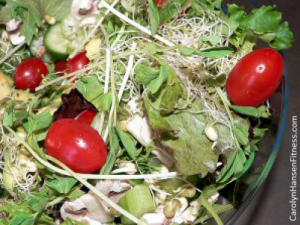 Organic foods are gaining in popularity and what was once found only in health food stores is now a regular feature in most supermarkets.
Organic foods are gaining in popularity and what was once found only in health food stores is now a regular feature in most supermarkets.
The word “organic” denotes the way farmers grow and process agricultural products like veggies, fruits, grains, dairy products and meat. Organic agricultural practices are designed to further soil and water conservation and cut down on pollution.
The U.S. Department of Agriculture has established an organic certificate program that requires all organic foods to fit strict government standards. These measures regulate how such foods are raised, handled and processed.
Organic farmers do not utilize conventional techniques to fertilize, contain weeks, or prevent livestock disease. They are not allowed to use synthetic pesticides, bio engineered genes (GMO’S), sewage sludge based fertilizers or petroleum-based fertilizers. Rather than utilizing chemical weed killers, organic farmers might conduct more advanced crop rotations and spread mulch or manure to keep weeks cornered. When it comes to livestock, organic livestock must be fed organic feed and have access to the outdoors. No antibiotic, growth hormones or animal by products are allowed.
Conventional farmers on the other hand, utilize pesticides to protect their crops from molds, insects and diseases. This spray pesticide leaves residue on produce. People that buy organic want to restrict their exposure to these dangerous residues because organic produce bears significantly fewer pesticide residues than conventionally grown produce.
When a food item holds a Department of Agriculture Organic label, it means it’s produced and processed according to the Department of Agriculture criteria. Products that are 95 percent or more organic can display the organic seal. Although the seal is voluntary, a lot of organic producers utilize it for obvious reasons.
In order to say 100 percent organic, products must be either totally organic or made of all organic components. Products such as fruits, veggies, eggs or other single-ingredient foods are marked 100 percent organic and may also carry the Department of Agriculture seal.
If a food label says “made with organic ingredients” it’s only 70 percent organic ingredients that were used. Foods with less than 70 percent organic components cannot utilize the seal or the word “organic” on their product labels although they include the organic items in their ingredient list.
Be aware that organic and natural are not interchangeable terms. “Natural,” “all natural,” “free-range,” or hormone-free” on food labels do not mean organic.
Bottom line is only foods that are raised and processed according to the Department of Agriculture organic criteria may be labeled organic.
Although conventionally grown produce commonly costs less, is this savings worth putting your health at risk? Only you can make that decision. Truth is, the money you save now by eating conventionally grown produce will likely be spent down the road to patch your health from the destruction that those pesticides and chemicals over time have caused.
The equation is fairly simple: To maintain long-term health and prevent diet-related diseases, stick to a healthy balanced diet that is rich in an assortment of nutritious foods and whenever possible buy organic to avoid those damaging pesticides and chemicals.
Be sure and check out the newest addition to my anti-aging library of help…“Reclaim Your Longevity.”